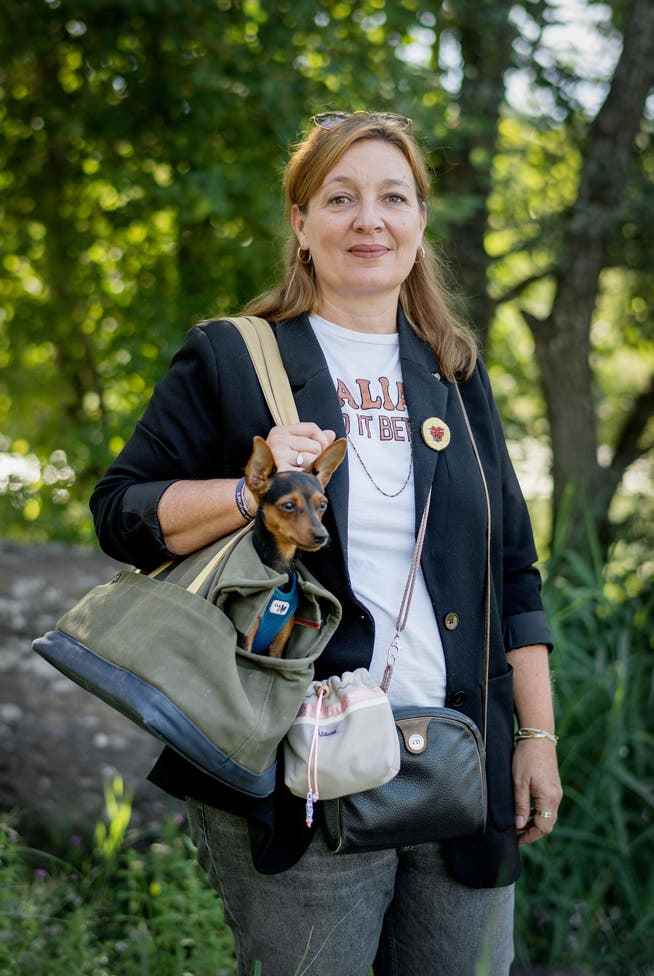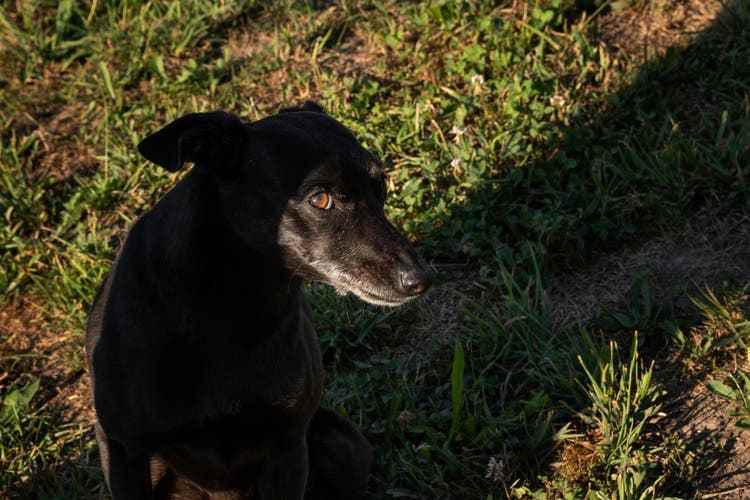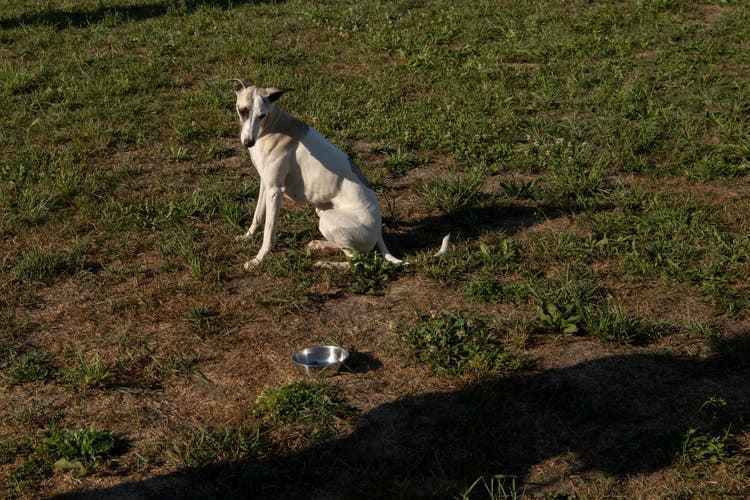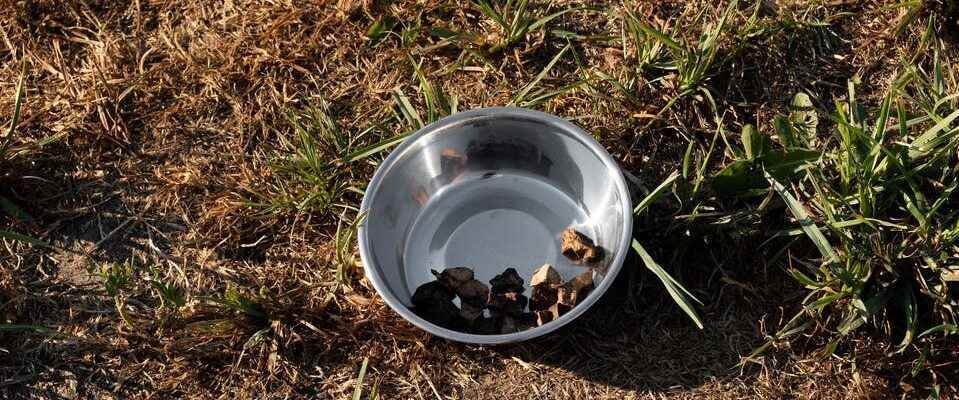Karin Hofer / NZZ
Reports of alleged poison bait attacks are piling up on social networks. There are only a few confirmed cases, but the fear among dog owners is great.
Every dog owner’s nightmare becomes reality for Janine Rickenmann on a Thursday afternoon in January. Rickenmann walks through the Irchelpark with her 11-year-old dog Caramel. On the meadow behind the university, she lets the dog off the leash. Caramel plays with another dog, digs in a mouse hole – and then suddenly falls over, lying motionless.
Rickenmann panics and collapses next to her dog. Two young women rush over to try to revive Caramel – without success. They grab her and run with her to the nearby animal hospital. When they arrive, Caramel is already dead. A few days later, the results of the pathological examination are available. They show: Caramel was poisoned.
Rickenmann filed a complaint against unknown persons at the Unterstrass quarters police station. Around the same time, the city police sent out a media release: Meatballs prepared with rat poison were seized on St. Moritzstrasse in district 6 and on Kappenbühlstrasse in district 10. Caramel also succumbed to rat poison. Is there a connection between the three cases?

The dog owner Janine Rickenmann with her dog Mogli in the Irchelpark. Her dog Caramel died in Irchelpark after eating bait laced with rat poison.
To date, Janine Rickenmann has not had an answer to this question. The perfidious thing about rat poison is that the symptoms often only start days after ingestion. Active ingredients such as coumarin derivatives inhibit the activation of vitamin K, which is responsible for blood clotting. Bleeding occurs, for example in the lungs or in the gastrointestinal tract. This can take several days. The animals die a slow death.
Where and when a dog was poisoned can usually no longer be reconstructed. Even Janine Rickenmann doesn’t know exactly where her dog ate the poisoned bait. Two weeks before her death, Caramel vomited blood and had bloody diarrhea. At the vet she got various injections with painkillers and antibiotics. In the days that followed, she seemed to get better. Until she suddenly dropped dead on Thursday afternoon.
The attacks in January are not isolated cases – at least if you believe the reports on social networks. In Facebook groups and various dog apps, references to poisoned baits are actively shared. Danger seems to be lurking everywhere: in the park, on the side of the road or in the forest. Fear is high among dog owners.
Is she also entitled?
The downside of the dog boom
The fact is that in densely populated areas, on footpaths or in the forest, there are always conflicts between dog owners and non-dog owners. During the pandemic, many people in Zurich longed for company in the home office. The number of dogs in the city rose sharply during the Corona years – from 7647 (2019) to 9173 (2022). According to the national dog database Amicus, there are currently 67,679 dogs living in the entire canton – more than in any other canton.
The dog owners share the limited local recreation area with joggers, cyclists, walkers and families. Many neo-dog owners are overwhelmed with their animal, as the Tamedia newspapers recently reported. If the puppy has not been socialized properly, the lack of education will become noticeable in the teenage years at the latest. Such dogs cannot deal with stimuli from the environment, then pull on the leash, bark at joggers and cyclists or even behave aggressively.
Another nuisance is the dog droppings along the way or in parks. Disposal and Recycling Zurich (ERZ) makes 4.5 million dog waste bags available every year. Despite this, not all owners go to the trouble of disposing of their dogs’ droppings. On the paved roads, the city cleaning department wipes up the manure with street sweepers. On lawns, the cleaning team has to collect the faeces one by one with bags.
More dogs means more poo, and in clean Zurich, every pile that is left standing is noticed. This also causes trouble among dog owners. Many fear that the misconduct of a few will fuel resentment against dogs in general and attract dog haters.
One to two poisoned baits per year in the city of Zurich
Neither the Zurich Animal Hospital nor the Zurich City Police can confirm that poisoned bait attacks have increased with the dog boom. The city police kept receiving reports in this context – but usually it was a “false alarm”. Every year there are one or two cases in the city where prepared feed baits are actually confiscated.
In Facebook groups and on apps like Dogorama, Petleo and Dog Guard, however, users are overwhelmed with warnings.
On May 23, a user wrote in the Facebook group “Poisonous Bait Alarm Switzerland”:
«[. . .] A police officer from the Altstetten 8048 police station informed another customer that someone in the Altstetten district Im Struppen had laid out prepared bait (sausages with screws, etc.). It can be assumed that such perpetrators are expanding their radius!”
On July 10, another warning from the canton of Zurich is published in the same group:
“In Hinwil it has just become fashionable for the residents (cat owners) to scatter minced meat on the meadows in Oberdorf (swimming area). Since this is partly mixed with blue beads, I’m guessing slug poison, please be careful. Especially young dogs are often faster than the master! Always have activated charcoal with me and remove what I find.”
On July 14, a user in the Dogorama app reports a danger in Dietikon:
“Danger! To the left of Rapidplatz there are a lot of leftover meat, cooked bones and probably draped treats. I also found a few shards. Please avoid this area.”
A message from Gossau (ZH) follows in the same app on July 22nd:
“A bait prepared with glass was eaten by a dog.”
The fact that not every sausage and cheese sandwich was dumped by the wayside with bad intentions seems secondary. Anything suspicious is reported. The Zurich City Police know about the reports in the social networks and are also actively trying to get in touch with the authors – so far without success.
Many of these clues cannot be verified. But they clearly show one thing: the need among dog owners is great.

Dog trainers Maximiliane Lotz and Miro Maeder want to help concerned dog owners with the “Refuse poison baits” course.
Learn to refuse poison baits
The two dog trainers Maximiliane Lotz and Miro Maeder from the dog school Martin Rütter Dogs Zurich Oberland also feel this. Lotz and Maeder know Janine Rickenmann personally. The death of the dog Caramel also affected her.
So difficult that they have included the “Refuse Poison Bait” course in their offer. The demand was so great that the two-day course was fully booked within one day. “Our customers are very concerned that the dog could die from a poisoned bait,” says Lotz. “We want to help them and show what can be done so that the dog no longer picks up everything from the ground.”

The dog trainer Maximiliane Lotz and the dog trainer Miro Maeder train the dogs in their dog school so that they do not eat anything off the street, because there are always people who use poisoned bait to poison dogs, Pfäffikon, August 10th, 2022.
She and Maeder are standing with their three greyhounds Rio, Ella and Cuba on a fenced-in meadow in the industrial district of Pfäffikon in the Zurich Oberland. Lotz places a bowl of cattle and goat lungs five meters from Rio. When they heard the signal «Search!» there, Rio heads straight for the bowl. When he wants to taste the delicacy, Lotz calls “To me!”. The male turns and trots obediently to his dog owner.
Timely recall is one of the ways you can stop your four-legged friend from eating something lying around. Another option is viewing. The dog draws attention to its owner when it has found something – for example by sitting in front of it. You can also train a termination signal such as “Taboo”. At this signal, the dog lets go of its prey.
At the same time, however, it is also important that the dog learns to tolerate certain stimuli such as leftovers, explains Lotz. “Good stimulus-impulse control is essential.” You can also teach your dog that it is only allowed to pick up and eat something if the owner has given their okay beforehand. This signal is called “release”.
In the poison baiting course, Maeder and Lotz hide spaghetti and rice by the wayside – food that is not poisonous to the dogs. In fact, in addition to poisoned baits, there are a number of other dangers lurking outside, especially in summer, that many keepers are not even aware of, says Lotz. As an example, she cites blue-green algae and barbecue waste such as raw pork.
Rio sits in front of his bowl in the dog park and looks spellbound at Lotz. When no clearance sounds, he starts scratching himself – a skip action, Lotz explains. Despite the temptation, he leaves the lungs in the bowl untouched. “It takes a lot of practice, patience and time for the dog to be able to withstand stimuli so sustainably,” says Maeder. Dog training is often nothing more than everyday life.

The young greyhound Ella also has good stimulus-impulse control.
Perpetrators are almost never caught
Five months after Caramel’s death, Janine Rickenmann got a new dog. On a sunny Friday morning in August, the little dog pulls her through Irchelpark to the tree where two colored stones commemorate the deceased bitch. “My life has revolved around Caramel for eleven years, I thought I can never get over the grief, never have a dog again.”
In the first few weeks after the poisoning, she snuck into the park at night with a neighbor in the hope of catching the perpetrator red-handed. She hung leaflets around Irchelpark to warn other dog owners.
Anyone who lays out poisoned bait violates the Animal Welfare Act and will be reported as animal cruelty. The public prosecutor decides on the sentence. But rat poison is freely available, and it’s easy to drop a bait unnoticed. The perpetrators are almost never caught.
Rickenmann also had to realize that the Caramel case would probably remain unsolved forever. Now she is standing on the spot where the bitch collapsed seven months ago. “I’ve avoided this place for a long time,” says Rickenmann, looking across the fields to the University of Irchel. “But it’s so beautiful here. I don’t want to let that take me away.”
She attended Lotz and Maeder’s course with her new dog Mogli. “It calms me down to know how to behave.” And yet, the uncertainty remains.
